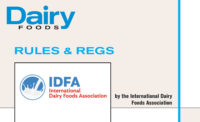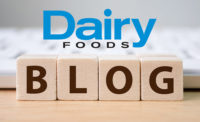The competitive grocery retail landscape is quickly changing and there are two primary trends behind this changing environment: a changing consumer, who is bringing new purchase decision triggers into the marketplace, and a changing competitive marketplace which has put new pressures on traditional grocery retailers.
The changing consumer, mostly driven by trends we saw emerge with millennials (ages 18-35), is looking for more information about the products she purchases. Specifically, consumers are looking for transparency in the food production process. This means they want to know about the farmers that produced the food; how they produced it, such as the on-farm production practices that were used; and they want to know that the animals were well cared for in the process.
The changing competitive landscape has dictated that retailers change their focus from an operations-driven strategy to a consumer-driven strategy. Today, food can be purchased in every channel of distribution and this has required traditional grocery retailers to serve their shopper needs through increased engagement in the shopping experience. This includes educating consumers about the production of the food they purchase. QR codes can provide transparency.
Developing growth strategies
Today, retailers and brands are developing growth strategies that resonate with consumers, in particular — how to engage with them throughout the path to purchase — otherwise known as “before, during and after” their in-store visit. The “before” experience includes visiting retailer and manufacturer websites, retailer online ads, customer reviews, social media and coupon websites. “During” the shopping experience, shoppers are educating themselves through the use of their smart phones by visiting websites, utilizing apps and by scanning QR codes for additional product information.
And “after” their shopping visit, they are using loyalty programs, completing surveys, signing up for sweepstakes, sharing promotions and providing social media feedback to their circle of friends. The dairy department provides a great opportunity for retailers to connect to their shoppers to provide not only promotional and nutritional information, but also to connect the shopper to “farm to fridge” information about the production of dairy products. Dairy is important to grocery retailers, with 98% of all households shopping in the dairy department and 96% of all households purchasing milk.
Personalized marketing
Midwest Dairy Association is helping retailers and dairy product manufacturers connect to shoppers through personalized marketing. Personalized marketing allows retailers and brands to deliver messages directly to the consumer in a way that is comfortable and convenient for them, such as text messages, mobile advertising, direct emails, direct mail and product packaging. And thanks to QR code technology, all types of messaging (such as product nutrition, traceability, coupons and deals, sweepstakes, videos, instant ordering and cause marketing campaigns) can be delivered through the mobile device – leading to ongoing two-way engagement.
According to Christine Walsh, director of marketing and business development for FASTechnology Group, QR codes may have started many years ago, but they were not developed in a way that maximized their potential. The efficiency and sophistication of QR codes today, allow for collecting scan data and reporting data for unique insights. The improved QR code technology has resulted in greater marketing flexibility since, according to Nielsen research, 73% of consumers say they do or will use a QR code to get information if it’s relevant and compelling to them.
Improved communication
With assistance from Jamie Liebich, business development manager with Midwest Dairy, the Independent Grocers Alliance recently began a pilot program at Mahomet IGA, in Mahomet, Ill. By scanning the QR code that can be found throughout the dairy department, shoppers have access to the following information, which can be updated weekly using the back-end software:
- Weekly advertisement
- Rotating weekly featured recipes
- A dairy page that provides information
- Dairy nutrition
- On-farm practices
- Dairy cow care
- Information about how local milk is
- Mahomet IGA’s Facebook page
The QR code technology has allowed Mahomet IGA to increase its engagement with shoppers throughout the shopping experience by providing easy access to more information with the click of a button. In addition to working with retailers to incorporate QR code technology to deliver information, Midwest Dairy is also working with milk companies and dairy product manufacturers to include QR codes on their packages to link consumers directly to information about how these products are produced.
Midwest Dairy Association associates use QR codes in their dairy industry communications to link consumers directly to information about nutrition, animal care, on-farm information and dairy recipes. The technology allows for the flexibility to change the messaging as often as is needed, or as is relevant.



